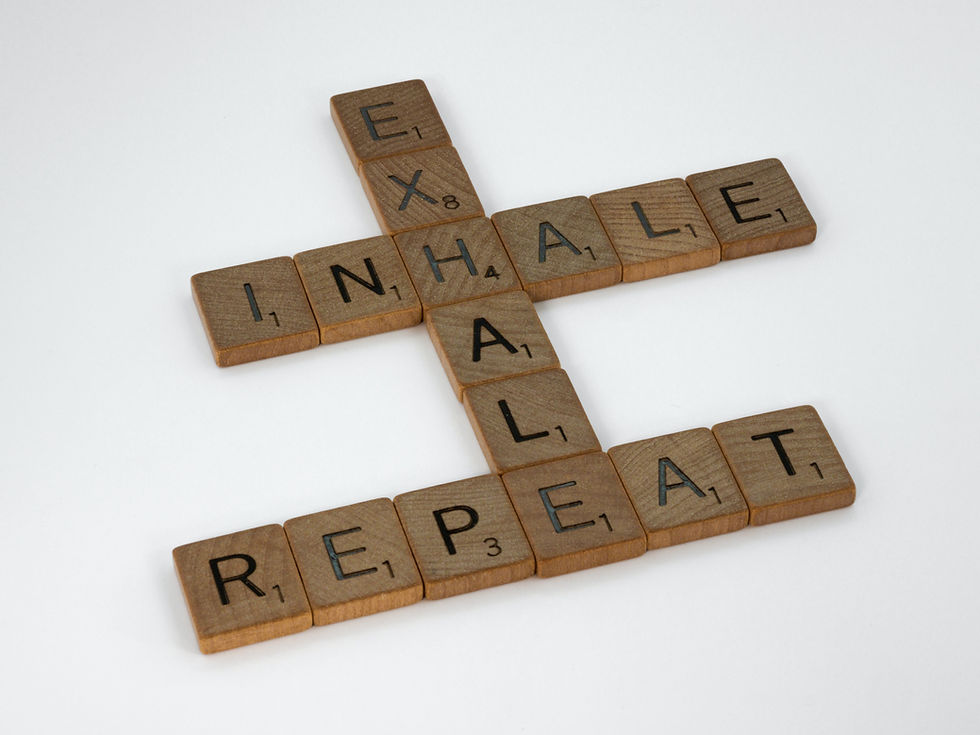Mindfulness Tools Part 1: Grounding Yourself in Stressful Times
- Mary Kate Fuller, MS, CNS, LDN, CHHP

- Nov 11, 2020
- 3 min read
Updated: May 19
“Natural healing is about taking control of your life and being responsible for everything that goes in and out of your body, mind, and spirit.”
This phase is a simple but powerful reminder that—even when life feels chaotic—we always have the power to pause, breathe, and choose how we respond.
This has never been more true than in times of stress, uncertainty, or major life transitions. Whether you're feeling overwhelmed by global events, personal health challenges, or the pace of daily life, mindfulness offers a way to anchor yourself and build resilience from the inside out.
Why Mindfulness?
Mindfulness is the practice of paying full attention to the present moment without judgment. It helps calm the nervous system, regulate emotions, and promote self-awareness—essential tools for navigating modern life.
Research continues to show that mindfulness can:
Reduce symptoms of anxiety and depression
Improve sleep and digestion
Support healthy blood pressure and blood sugar levels
Decrease fatigue
Enhance immune function
Improve relationships and emotional regulation
Support recovery from addiction
Mindfulness isn’t about tuning out—it’s about tuning in to your body, emotions, and environment so you can make conscious, life-affirming choices.
How Stress Disconnects Us
Have you ever driven somewhere and suddenly realized you don’t remember the trip? Or found yourself snacking without even being hungry? That’s autopilot—a state many of us fall into when overwhelmed, overstimulated, or just plain exhausted.
Chronic stress pulls us away from the present and into reactive loops. We may act out old patterns, ignore our needs, or numb out entirely. Mindfulness helps break this cycle by training your awareness to come back to the moment.
What Is Self-Awareness?
Self-awareness is the foundation of mindfulness. It means noticing what you feel—physically, emotionally, and mentally—without harsh self-judgment. When you become aware of your inner state, you can respond with intention rather than react out of habit.
Self-awareness includes:
Recognizing how your past influences your present
Tuning into your current body, mind, and emotions
Setting intentional goals for how you want to feel or show up
Simple Ways to Build a Mindfulness Habit
You don’t need to meditate on a mountaintop. Here are everyday ways to bring more presence into your routine:
Start or end your day with journaling to clear mental clutter
Practice deep breathing before meals or in stressful moments
Try gentle movement like yoga, qi gong, or tai chi
Use guided imagery or meditation apps
Notice one sensory detail in whatever you’re doing—washing dishes, walking, sipping tea
The key is consistency over perfection. Choose just one small practice each day that helps you reconnect with yourself.
Mindful Movement: Make It Intentional
Movement is medicine for your body and mind. And in our increasingly sedentary world, it’s more important than ever to make movement a conscious act.
Whether you’re folding laundry, walking the dog, or doing formal exercise, here’s how to move mindfully:
Focus on your breath and how your body feels
Notice which muscles are working, and where you feel tension or ease
Stay present rather than rushing to “complete” the task
Take time to stretch, ground, and check in with your body afterward
Coming up in Part 2, we’ll explore mindful and intuitive eating—how to heal your relationship with food and listen to your body’s inner wisdom.









Comments